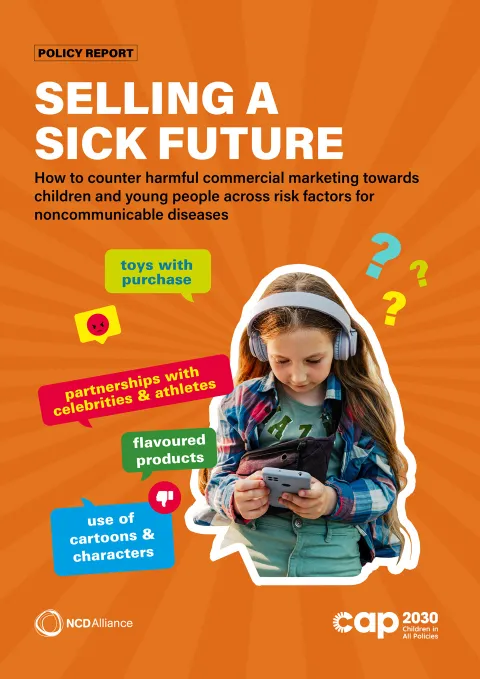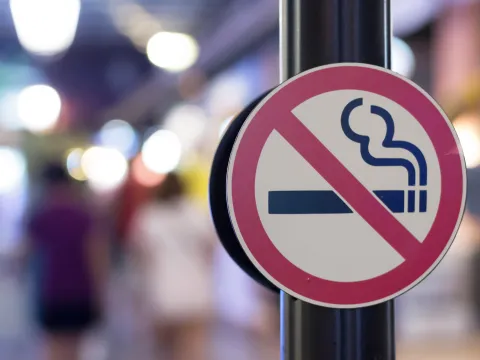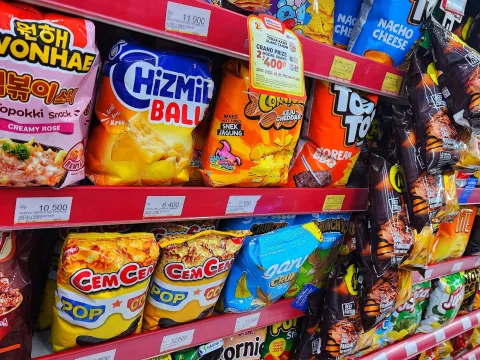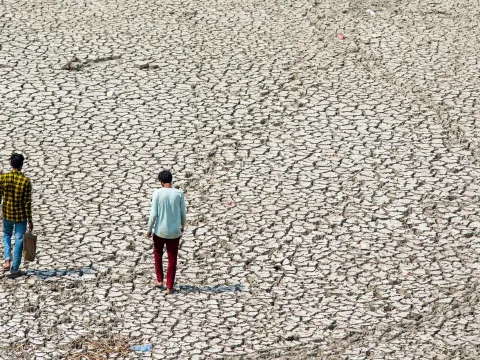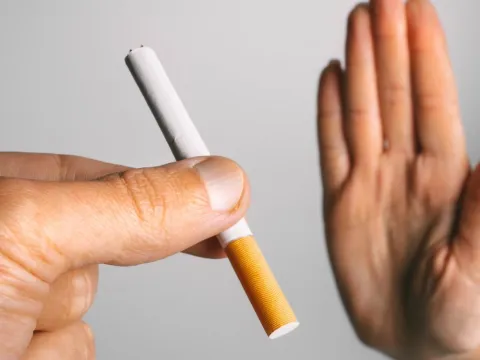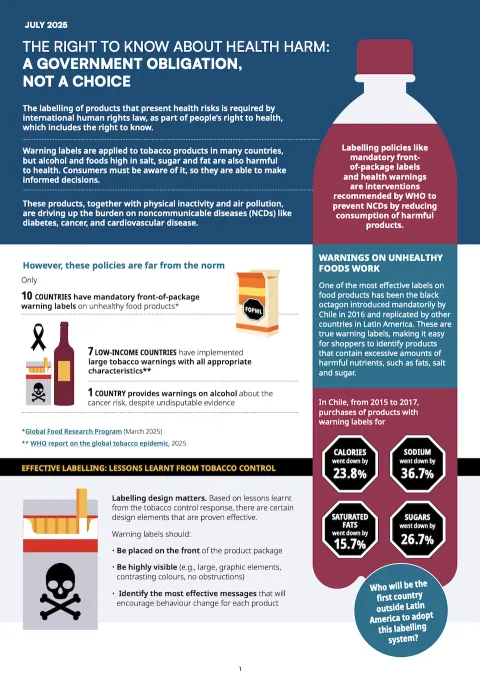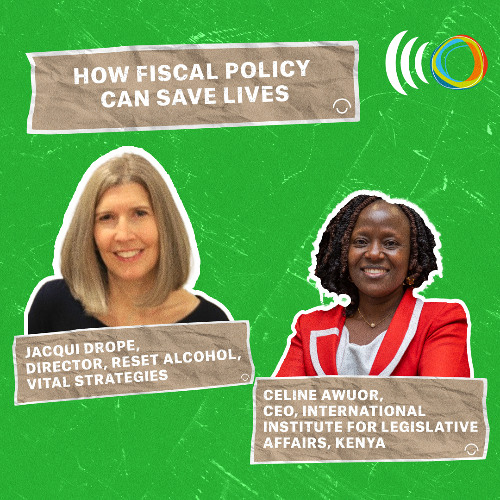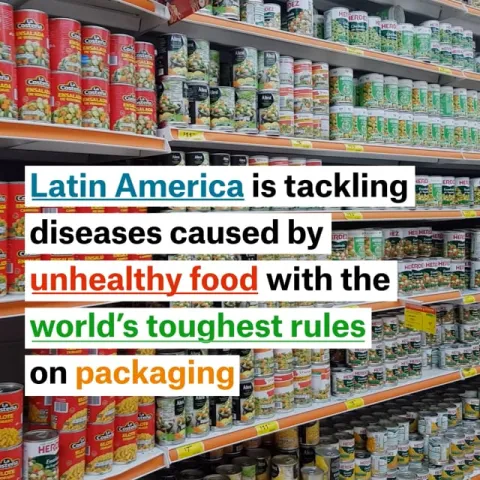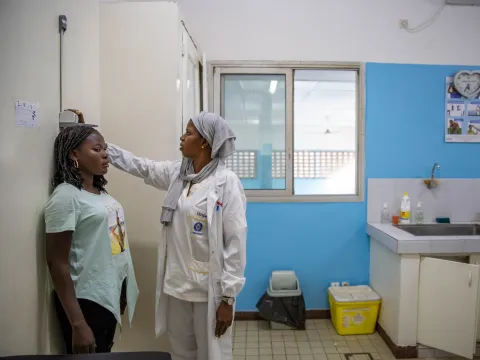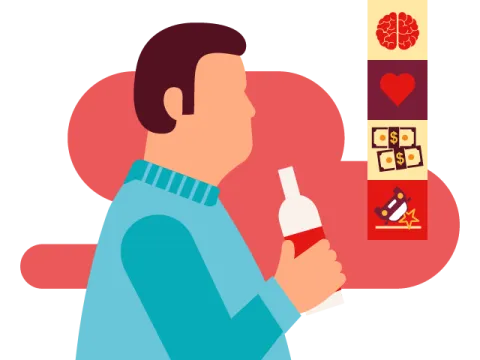Harmful marketing: selling a sick future to children and teens
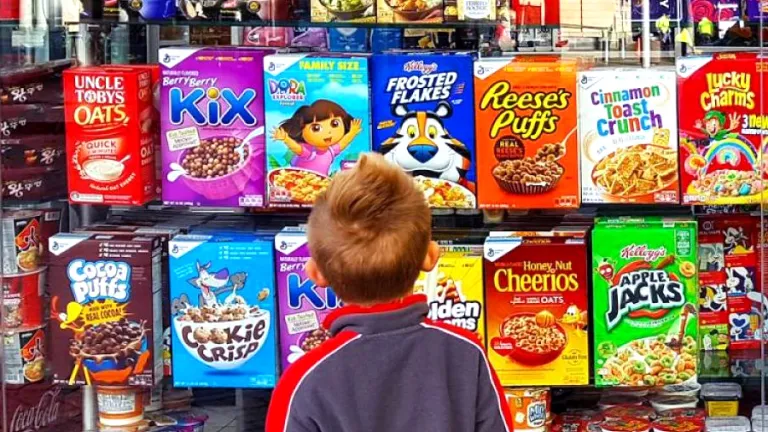
Industries involved in tobacco, alcohol, junk food and other unhealthy products are spending big money to find out all about kids everywhere, and get their messages across from a young age, keeping kids hooked as consumers for life, setting them on the road to a sick future of noncommunicable diseases (NCDs), mental health disorders and other chronic conditions. There has been a dangerous and enduring marriage between child psychology and marketing theory, used to target children as consumers, exploiting their naivete, vulnerability and emotions. Over decades, marketing tactics have traditionally ranged from the simple - including toys with purchases, using bright colours or cartoons, and flavouring of products - to present day digitalised sophistication - gamification, endorsements by celebrities and athletes, artificial intelligence or virtual reality. New frontiers are constantly being explored.
Reaching kids isn’t cheap - it is projected that global spending on advertising will reach US$674 billion this year - but in most countries, marketing spend is tax deductible, eliminating any positive benefit to the public that could come from this health-harming expenditure, while reducing the risk of investment in marketing for commercial entities.
And this doesn’t include the sums that companies spend to influence and undermine regulation of harmful marketing practices through highly effective lobbying, which tends to involve tactics such as fake science paid for by the industries themselves, huge political donations to buy support for industry-favourable policies, and intimidation or threats of influential industry critics.
In any case, the investment pays off, at the expense of our children’s health.
Capturing young audiences to ensure lifelong consumers
Noncommunicable diseases (NCDs) like diabetes, cardiovascular diseases, respiratory diseases and mental health conditions, cause 41 million deaths annually (74% of global mortality), with rising rates among children and young people in countries of all resource levels. The prevalence of hypertension in children for instance has increased four-fold in the past three decades; obesity in kids and teens has risen ten-fold in the past four decades; and type 2 diabetes, which tends to present in adulthood, is becoming more common among young people. Unhealthy products including junk food, tobacco and alcohol are key factors driving this global rise of NCDs, and marketing has been driving their popularity. Even tobacco and alcohol target young children, grooming them as future users by creating familiarity with brands early in life.
Smoking for instance was normalised to such an extent during the era of Joe Camel that the cartoon cigarette brand mascot was as recognisable as Mickey Mouse among 3 to 6-year-old American children. In a more recent study, 68 per cent of 5 and 6-year-olds surveyed from Brazil, China, India, Nigeria, Pakistan and Russia could identify at least one cigarette brand logo.
Similar tactics have been used across alcohol brands. Across the UK for example, advertisers have been explicitly including generational-specific language in their commercials and slogans, appealing to the ideas of sex, partying, sociability and games to normalise alcohol among youth and recruit young and newly legal drinkers.
Sport is another entry point. Across Europe, alcohol is a major sponsor of football competitions – for instance Heineken beer with the Champions League and Carling beer with the English Premier League.
Fizzy drink brands have perhaps been the most successful at marketing to children, embedding themselves in pop culture and even leading ‘revolutionary’ cultural shifts. Singers, athletes and influencers are in regular partnerships with soda or other unhealthy commodity brands, selling the idea of success, status and ironically, health and performance, to children and young people who are the main fans of these celebrities. Similar are corporate sponsorships of children’s sports events or community activities – think Coca-Cola - under the guise of ‘corporate social responsibility’.
Some countries have made efforts to limit marketing towards children, but industries are constantly devising ways around them, and “new markets” to exploit. This puts children in low- and middle-income countries (LMICs) at especially high-risk. One study found that McDonald’s marketing team posted 154 per cent more Instagram posts in LMICs than in high-income countries. 40 per cent of posts offered a promotion or giveaway compared to only 14 per cent in HICs. This is not a new tactic by health-harming industries. US litigation in the 1990s exposed some of the largest tobacco companies as specifically targeting developing countries in order to retain profits lost from growing restrictions in HICs. Alcohol and ultra-processed food companies have all followed suit, adopting this strategy from tobacco and aggressively advertising in LMICs.
Clear solutions to protect our kids
We know the problem, but we also know the solutions. Some of the most effective push back on these big health-harming industries has come from LMICs. Various countries such as Gabon, Gambia, Guyana, Maldives, Mauritius, Seychelles, Togo and Uganda have ensured that their tobacco control laws ban toys or candies that resemble tobacco products, and also ban internet communications on tobacco products and tobacco industry sponsorships, which otherwise often reach and impact young audiences.
But strong enforcement of such marketing restrictions - not just the implementation - is also essential to ensure the protection of children’s health. In 2022, the alcohol industry (Alcoholic Beverages Association of Kenya) lost in the Court of Appeals a case questioning the authority of the Kenya Film Classification Board to enforce alcohol advertisements limitations on TV during the watershed period.
And marketing restrictions don’t fully solve the problem of children’s overexposure to unhealthy products. While these limit products’ wide promotion, their affordability must also be reduced via health taxes, and labelling policies and education campaigns can increase awareness about their health risks.
Increasing access to healthy food options is also of paramount importance. Lessons can be learned for example from Barbados’ new School Nutrition Policy, aims to guarantee healthy food environments to school-age children by ensuring food provided meets nutrition standards, restricting the marketing of unhealthy foods and beverages in schools, and integrating nutrition and physical education in the school curriculum.
Ahead of the next UN High-Level Meeting on NCDs in 2025, the NCD Alliance is calling on all countries to reflect on the human and economic cost of these unhealthy products and commit to protect children and young people from their current over exposure, preventing them from a sick future.
